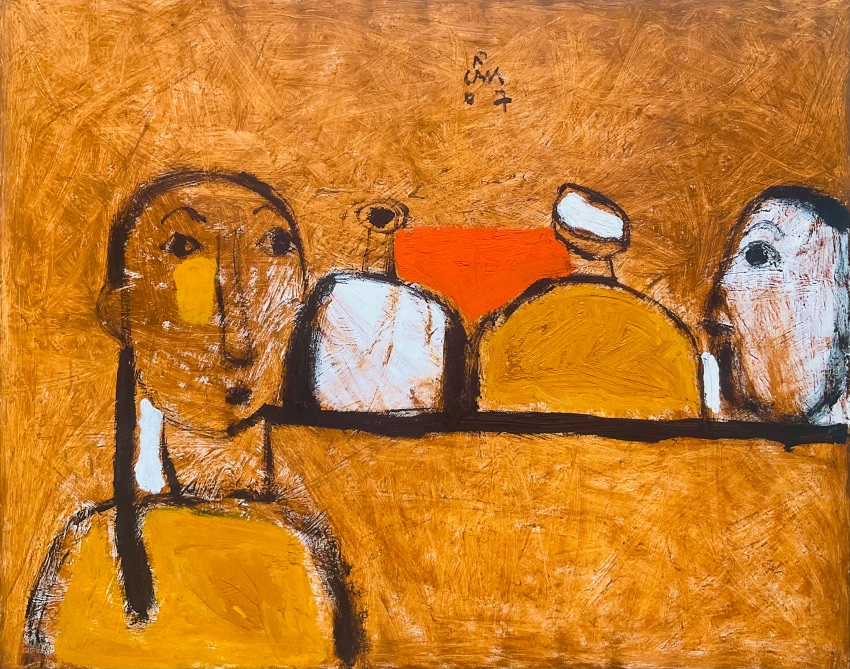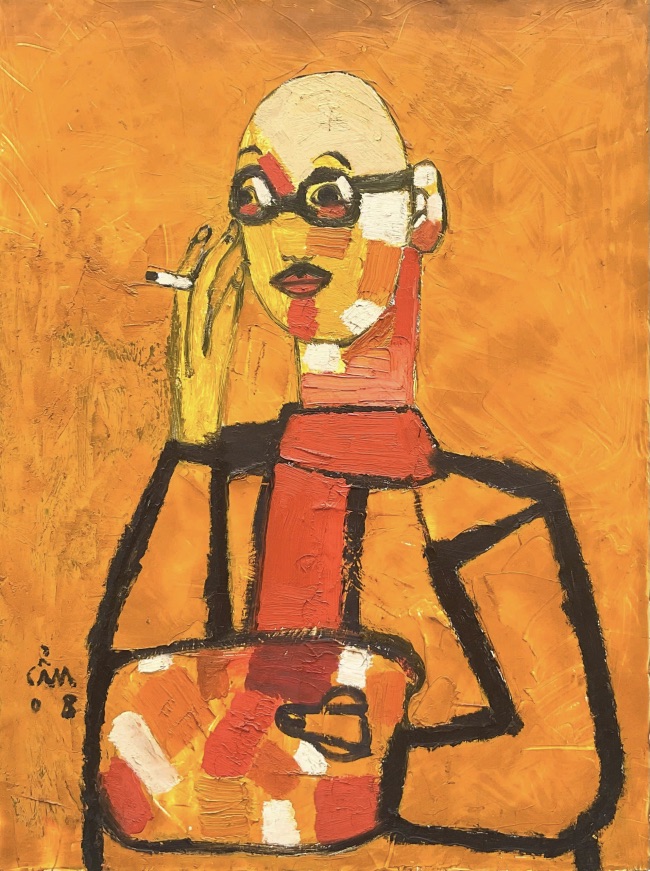Artist Hoàng Hồng Cẩm: A Modern Visual Language Rooted in Vietnamese Identity
Within the evolving landscape of contemporary Vietnamese art, Hoang Hong Cam (1959–2011) stands out as a prominent figure who forged his own distinct path. His artistic journey was defined by quiet determination, consistent exploration, and a profound commitment to building a personal visual language—modern in structure, yet deeply connected to the cultural essence of Vietnam.
The Artist and His Career: Quiet Strength, Steady Vision
Born into an artistic family in Hanoi, Hoàng Hồng Cẩm was the son of painter Hoàng Lập Ngôn, a noted pioneer in Vietnamese lacquer painting. However, Cẩm did not rely on family legacy. From his early days at the Vietnam University of Fine Arts, he exhibited a strong sense of independence and an intuitive grasp of visual composition.
While many of his contemporaries pursued commercial success or political expression, Hoàng Hồng Cẩm remained committed to a quiet, introspective approach to art. He was a disciplined creator who distanced himself from trends and instead focused on refining a visual identity that was personal, precise, and rich in aesthetic intent.

Artistic Style: Structured Abstraction and Visual Architecture
Though often associated with abstract expressionism, Hoàng Hồng Cẩm’s work leans more toward structured abstraction—where form, line, and color exist in an intentional visual relationship. His compositions are not narrative; rather, they offer autonomous visual environments where emotional resonance arises from color fields, spatial organization, and compositional balance.
Using a controlled palette of earthy tones and bold accents—deep reds, ochres, blacks, and whites—his paintings resonate with rhythm and tension. His approach to abstraction is grounded in discipline: there is a clear architectural logic in his works, a spatial precision that suggests both emotion and structure.
Cẩm’s paintings do not aim to provoke chaos or spontaneity. Instead, they reflect a measured, constructed visual order—an interplay between intuition and design, freedom and control. This quality gives his work a unique and recognizable identity within the broader context of Vietnamese contemporary art.
International Recognition: Museum Collections in Vietnam and Singapore
Hoàng Hồng Cẩm is among the rare Vietnamese contemporary artists whose works are represented in prestigious institutional collections, both domestically and internationally. Notably:
Vietnam National Fine Arts Museum (Hanoi): His works held here are considered important representations of Vietnam’s transition from representational to abstract visual art. These paintings reflect the evolving language of Vietnamese painting in the post-war and renovation periods.
Singapore Art Museum (SAM): One of Southeast Asia’s leading institutions for contemporary art, SAM maintains a selective collection policy. The inclusion of Hoàng Hồng Cẩm’s works in its permanent collection is a testament to his significance as an artist whose visual language resonates across national borders. His works are seen not just as personal expressions but as part of the broader narrative of Southeast Asian modernism.
The selected works housed in these institutions showcase his mastery of form, texture, and composition, highlighting the international relevance and longevity of his visual voice.

Legacy: A Discipline of Quiet Creation
Throughout his life, Hoàng Hồng Cẩm refrained from self-promotion or public spectacle. He devoted his time to his studio, to the act of painting itself. In doing so, he exemplified the ideal of the artist as a dedicated, thoughtful craftsman—building his legacy through depth of labor rather than public persona.
His lasting contribution lies not only in the number of works he created, but in the clarity and consistency of his artistic vision. In a contemporary art scene often marked by eclecticism and instability, Hoàng Hồng Cẩm’s paintings stand out for their coherence, formal strength, and aesthetic maturity.
Conclusion
Hoàng Hồng Cẩm was a defining figure in the evolution of Vietnamese abstract painting—a painter who developed a personal and structured visual language that balanced emotional intensity with compositional logic. His works, held in the permanent collections of the Vietnam National Fine Arts Museum and the Singapore Art Museum, affirm not only his individual artistic achievement but also the international relevance of modern Vietnamese painting.
In his quiet dedication, Hoàng Hồng Cẩm left behind a body of work that continues to inspire, challenge, and enrich the discourse of Southeast Asian contemporary art.
